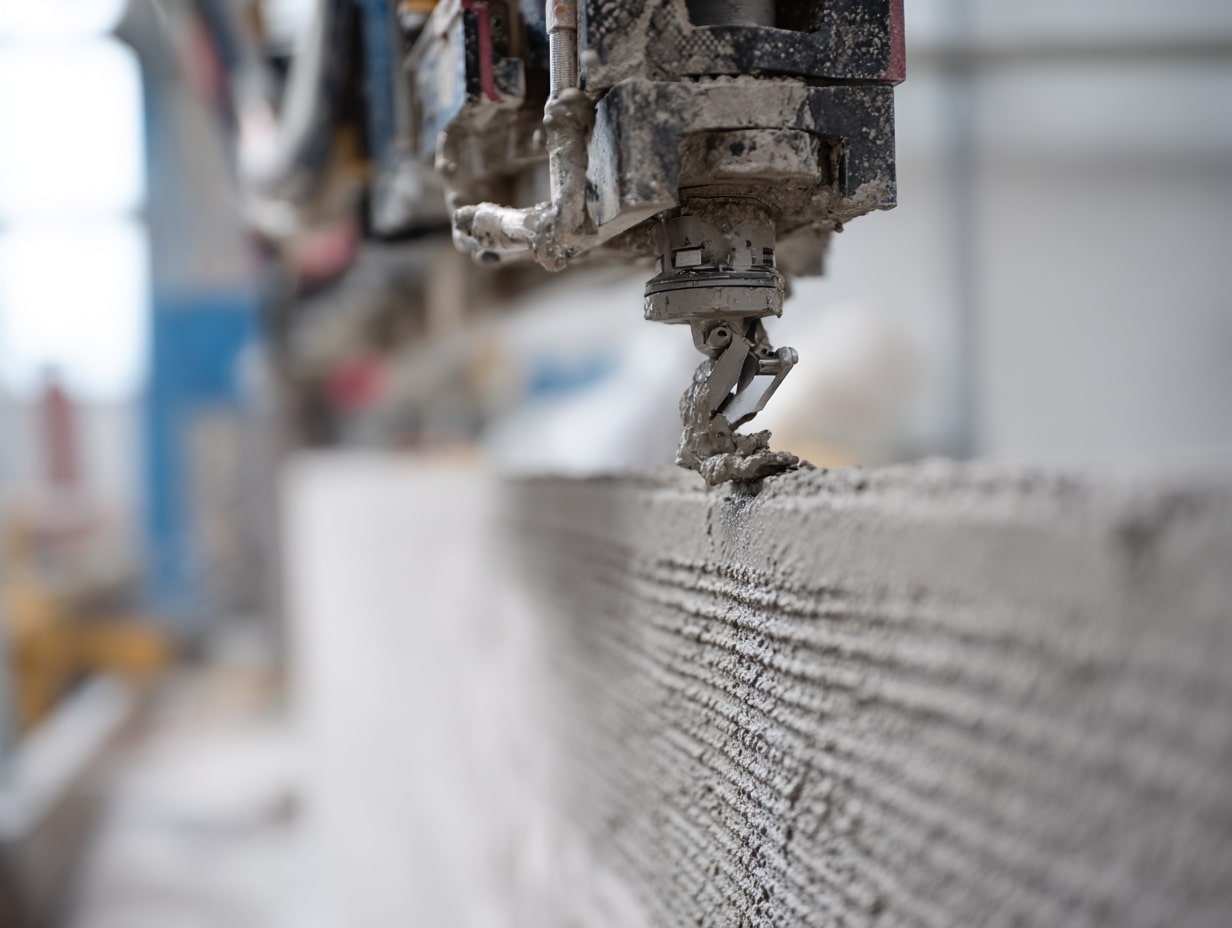- Home
- Articles
- Architectural Portfolio
- Architectral Presentation
- Inspirational Stories
- Architecture News
- Visualization
- BIM Industry
- Facade Design
- Parametric Design
- Career
- Landscape Architecture
- Construction
- Artificial Intelligence
- Sketching
- Design Softwares
- Diagrams
- Writing
- Architectural Tips
- Sustainability
- Courses
- Concept
- Technology
- History & Heritage
- Future of Architecture
- Guides & How-To
- Art & Culture
- Projects
- Interior Design
- Competitions
- Jobs
- Store
- Tools
- More
- Home
- Articles
- Architectural Portfolio
- Architectral Presentation
- Inspirational Stories
- Architecture News
- Visualization
- BIM Industry
- Facade Design
- Parametric Design
- Career
- Landscape Architecture
- Construction
- Artificial Intelligence
- Sketching
- Design Softwares
- Diagrams
- Writing
- Architectural Tips
- Sustainability
- Courses
- Concept
- Technology
- History & Heritage
- Future of Architecture
- Guides & How-To
- Art & Culture
- Projects
- Interior Design
- Competitions
- Jobs
- Store
- Tools
- More
Boost Your Architectural Firm’s Presence on LinkedIn: Tips and Strategies

In today’s digital age, LinkedIn isn’t just a platform for job seekers; it’s a powerful tool for businesses, especially architectural firms, to expand their reach and influence. With over 700 million professionals on LinkedIn, it’s the perfect place for us to showcase our projects, network with industry leaders, and attract potential clients.
By leveraging LinkedIn’s features, we can position our firm as a thought leader in the architectural industry. From sharing insightful content to engaging with followers, every interaction helps build our brand’s credibility. Let’s explore how we can strategically grow our architectural firm’s presence on LinkedIn and make meaningful connections that drive success.
Table of Contents
ToggleUnderstanding LinkedIn’s Role in Business Growth for Architects
LinkedIn serves as a critical platform for architectural firms seeking business growth. By leveraging its features, firms can enhance their professional visibility and connect with key industry players.
Why Architects Should Leverage LinkedIn
Architects should use LinkedIn to grow their network and showcase their expertise. With over 900 million members, LinkedIn offers a vast pool of potential clients, partners, and collaborators. Architectural firms can display their portfolio, share case studies, and post updates on ongoing projects. Engaging with content and participating in industry discussions establish credibility and thought leadership.

The Unique Advantages LinkedIn Offers to Firms
LinkedIn provides unique advantages to firms that enhance business growth. Its targeted advertising helps reach specific demographics, such as real estate developers and construction companies. Firms can use LinkedIn Analytics to evaluate the performance of their posts and understand audience engagement. Endorsements and recommendations from satisfied clients and colleagues add to a firm’s credibility. LinkedIn Learning offers courses that can help team members stay updated with the latest industry trends and tools. The platform’s group feature allows for active participation in professional communities, fostering discussions and sharing insights.
By using these features, architectural firms can effectively grow their presence and achieve business success on LinkedIn.
Crafting a Strong LinkedIn Profile for Your Architectural Firm
A well-structured LinkedIn profile makes a significant impact on how an architectural firm is perceived. We focus on essential components and provide tips for enhancing the bio and description to maximize appeal.
Essential Components of a Professional LinkedIn Profile
A compelling LinkedIn profile has several key elements:
- Professional Profile Image: Use a high-quality logo or an office photograph that reflects the firm’s brand identity.
- Cover Image: Include a cover image showcasing your signature projects or office workspace, adding visual interest and professionalism.
- Headline: Craft a clear, impactful headline. Include industry-specific keywords to improve search visibility.
- About Section: Write a concise yet informative summary that highlights your firm’s expertise, values, and unique selling propositions.
- Experience: Detail significant projects, client collaborations, and any industry awards. Display chronological progress to show growth and stability.
- Skills and Endorsements: Add relevant skills and seek endorsements from clients and peers to build credibility.
- Recommendations: Request recommendations from satisfied clients and partners. These provide social proof and demonstrate the firm’s reliability.
- Content Postings: Regularly share relevant articles, project updates, and architectural insights. Engaging content positions your firm as an industry thought leader.
Tips for Enhancing Your Firm’s LinkedIn Bio and Description
Optimizing the bio and description increases the chances of attracting potential clients:
- Incorporate Keywords: Use industry-specific terms that prospective clients and professionals might search for, enhancing discoverability.
- Maintain Brevity and Clarity: Keep sentences short and clear, avoiding jargon that might confuse readers.
- Showcase Achievements: Highlight completed projects, awards, and recognitions. Use figures like project sizes and client satisfaction rates for specificity.
- Demonstrate Expertise: Emphasize areas of specialization, such as sustainable design or urban planning, to attract targeted client segments.
- Call to Action: End with a clear call to action, inviting viewers to visit your website, contact for inquiries, or follow your page for updates.
- Update Regularly: Keep the bio and description current with new projects, achievements, and relevant industry shifts to maintain relevance and engagement.
By focusing on these components and tips, we ensure our LinkedIn profile accurately represents our architectural firm, enhances visibility, and connects us with the right audience.

Strategies to Boost Visibility and Engagement
Architectural firms can significantly enhance their presence on LinkedIn by strategically using platform features for visibility and engagement.
Using LinkedIn Articles and Posts Effectively
Crafting detailed articles and posts elevates our firm’s reputation. Articles allow us to delve into topics like sustainable architecture trends, innovative design methods, and successful project case studies. Posts enable regular updates, sharing firm’s milestones, or celebrating client successes.
Key Strategies:
- Frequency: Post regularly, aiming for two articles and three posts per month.
- Engagement: Ask questions, encourage comments, and respond promptly.
- Hashtags: Use relevant hashtags like #Architecture, #Design, and #Sustainability.
- Visuals: Include high-quality images of projects to catch attention.
The Power of LinkedIn Groups and Networking
Participating in LinkedIn groups helps us connect with peers and potential clients. Joining groups focused on architecture, construction, and real estate allows us to share insights and learn from industry discussions.
Key Strategies:
- Active Participation: Contribute valuable content and engage in discussions.
- Connections: Build relationships by connecting with members after meaningful interactions.
- Group Creation: Create a group for topics like urban architecture, fostering a community.
Leveraging Multimedia Content
Using multimedia content such as images, videos, and infographics enhances engagement. Videos of project tours, client testimonials, and design process explanations offer an engaging way for potential clients to understand our work.
- Professional Quality: Use high-quality equipment for photos and videos.
- Regular Uploads: Share multimedia content weekly to maintain interest.
- Diverse Formats: Use a mix of formats like infographics, time-lapse videos, and project walkthroughs.
These strategies position our architectural firm as an industry expert and engage our audience effectively on LinkedIn.

Measuring the Success of Your LinkedIn Strategy
Tracking the success of our LinkedIn strategy helps us refine our efforts and achieve better results.
Key Metrics to Track on LinkedIn
Certain metrics demonstrate how well our content performs:
- Engagement Rate: Measures likes, comments, and shares. Higher engagement indicates our content resonates with the audience.
- Follower Growth: Tracks increases in our follower count. Steady growth points to effective engagement and visibility strategies.
- Post Impressions: Reflects how often our posts appear in users’ feeds. Higher impressions suggest broader reach.
- Click-Through Rate (CTR): Evaluates the effectiveness of our call-to-action (CTA). A higher CTR reveals compelling content.
- Conversion Rate: Measures actions taken after clicking our CTA (e.g., website visits, sign-ups). Indicates success in driving desired outcomes.
Tools for Analyzing LinkedIn Analytics
Using analytics tools simplifies tracking these metrics:
- LinkedIn Analytics: Provides data on post performance, follower demographics, and engagement rates. Helps fine-tune our content strategy.
- Hootsuite: Offers comprehensive tracking, from engagement to follower growth. Allows scheduling and measuring post success.
- Google Analytics: Integrates with LinkedIn to track conversions through our website. Provides in-depth insights on user behavior.
- Sprout Social: Monitors engagement and analyzes content performance. Delivers detailed reports for strategic adjustments.
These tools assist in making informed decisions. By leveraging them, we gain valuable insights into our LinkedIn presence and can adapt our strategy to optimize performance continuously.

Conclusion
Leveraging LinkedIn effectively enhances our architectural firm’s visibility and networking. By utilizing features like targeted advertising and LinkedIn Learning, we position our firm for greater reach. Crafting insightful articles, engaging in relevant groups, and incorporating multimedia content elevate our engagement and visibility.
Measuring the success of our strategies requires tracking key metrics such as engagement rate, follower growth, post impressions, click-through rate, and conversion rate. Tools like LinkedIn Analytics, Hootsuite, Google Analytics, and Sprout Social assist in refining our content strategies and optimizing performance continuously.
By focusing on these strategies and metrics, we ensure our presence on LinkedIn remains robust and effective.
- architectural firm LinkedIn tips
- boost architecture firm presence
- boosting firm visibility on LinkedIn
- enhance architectural presence LinkedIn
- enhance LinkedIn profile for architecture
- LinkedIn growth tips for architecture firms
- LinkedIn marketing for architects
- LinkedIn marketing tips for architectural firms
- LinkedIn strategies for architects
- strategies for architects on LinkedIn
Trained as an architect and seasoned in the editorial trenches, I turn raw design concepts into compelling narratives that resonate beyond studio walls. My work spans in-depth project spotlights, interviews with visionary designers, and analysis pieces that distill complex technical data into accessible insights. Whether polishing copy for publication or generating original features, I draw on years of practice to ensure every sentence captures architecture’s rigor, poetry, and cultural impact—inviting professionals and enthusiasts alike to see the built environment through a sharper, more inspired lens.
Submit your architectural projects
Follow these steps for submission your project. Submission FormLatest Posts
3D Printed Homes: Time, Cost, and What to Expect
3D printed homes explained: realistic timelines (24–72h walls, 8–16 weeks total), true...
How a Contact Centre Boosts Trust in Your Building Business
In construction, trust is the glue that holds projects together. Clients need...
How Real Time Parcel Geolocation Is Redefining Last Mile Efficiency for Modern Businesses
Last mile delivery has become the most critical point in the customer...
How Can Small Spaces Stay Stylish and Relaxing?
In today’s fast-paced urban lifestyle, small living spaces are becoming increasingly common....












Leave a comment